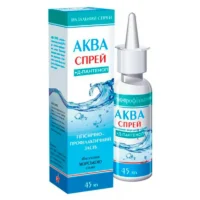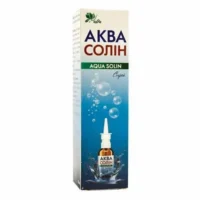Description
Rinazolin (Oxymetazoline) Nasal Drops 0.05% 10 ml Vial
Ingredients
- Active ingredient: Oxymetazoline hydrochloride 0.05%.
- Other ingredients: Benzalkonium chloride, sodium chloride, sodium phosphate, sodium citrate, citric acid, and purified water.
Dosage
Adults and children over 6 years: 2-3 drops in each nostril every 10-12 hours. Do not exceed 2 doses in 24 hours.
Indications
Rinazolin nasal drops are indicated for the relief of nasal congestion due to colds, allergies, or sinusitis.
Contraindications
- Do not use Rinazolin nasal drops if you:
- Are allergic to oxymetazoline or any other ingredients.
- Have narrow-angle glaucoma.
- Are taking MAO inhibitors.
Directions
For nasal use only. Tilt your head back, insert the dropper into the nostril, and squeeze the prescribed number of drops. Breathe in gently. Repeat in the other nostril.
Scientific Evidence
Oxymetazoline, the active ingredient in Rinazolin nasal drops, is a selective alpha-1 adrenergic receptor agonist. It works by constricting blood vessels in the nasal passages, reducing swelling and congestion. Studies have shown that oxymetazoline provides rapid and effective relief from nasal congestion with minimal systemic absorption, making it a preferred choice for nasal congestion relief.
Additional Information
Rinazolin nasal drops should not be used for more than 3 consecutive days. Prolonged use may lead to rebound congestion. Consult a healthcare professional before using this product if you have heart disease, high blood pressure, thyroid disease, diabetes, or prostate enlargement.
Pharmacological studies have demonstrated that oxymetazoline has a rapid onset of action, with effects lasting up to 12 hours. Clinical trials have shown that Rinazolin nasal drops provide significant relief from nasal congestion compared to placebo, with a low incidence of side effects.
When compared to other nasal decongestants, oxymetazoline has been found to have a longer duration of action and a lower risk of systemic side effects. Its efficacy and safety profile make it a widely used and trusted treatment for nasal congestion.





